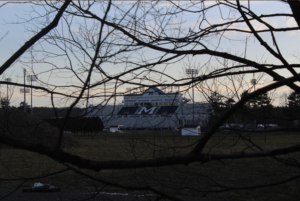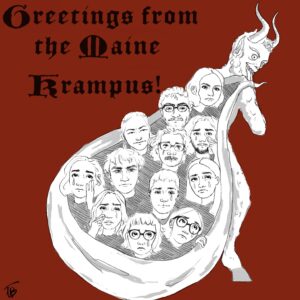Dr. Dominic Winski, a research assistant and professor with the Climate Change Institute at the University of Maine, has received $137,419 from the National Science Foundation (NSF) to put towards research regarding the reconstruction of summer climate and wildlife history dating 1,500 years back. His research will focus on parts of Alaska, western Canada and Siberia. Winkski will be using an ice core from Denali National Park, located in Alaska, to aid in his research. An ice core is a sample of ice that can provide a rough timeline of a climate change over the course of many years, with each new layer of ice representing one year.
According to the American Museum of Natural History, “Ice cores can tell us a lot about ancient climates, including local temperature, CO2 concentration and, based on dust trapped in the ice, global and local wind patterns. These data, in turn, help us understand why and how the climate system changed in the past, how it works today, and how we might expect it to change in the future.”
The Denali ice core is in pristine condition, meticulously researched and dated, and derived from high and usually inaccessible peaks in Alaska.
“Using this unique ice core means that we will produce fire records with synchronously dated information on past temperature, rainfall and wind patterns,” Winski said in an interview with UMaine News.
Since Winski is interested in studying the history and the effects of climate warming and wildfires in the Arctic, he will be searching for compounds associated with wildfires that have become trapped in the ice cores. Winski hopes to understand why the Arctic is warming and why wildfires have been occurring in these historically cool regions, both in modern times and in the past.
“The Arctic is warming more rapidly than any other region in the world…” Winski said. “To anticipate and prepare for a warming Arctic, it is critical to better understand past variations in summertime climate and their associated environmental effects, particularly during warm periods such as the Medieval Climate Anomaly.”
The temperatures from the time period of the Medieval Climate Anomaly, sometimes referred to as the Medieval Warm Period, are similar to those seen today in the Arctic Circle. However, it is theorized that more human impact is to blame for global warming today than in the past. Looking back on historically warm periods in this region can better prepare scientists for the impact of climate change on the Arctic region today. According to UMaine News, Winski’s main objective is to compile “the most comprehensive suite of North Pacific fire and summer climate proxy records since 500 CE.”
UMaine is the lead institution in this research, in collaboration with the University of New Hampshire, Dartmouth College and the University of California at Irvine. In total NSF has granted $570,428 to these institutions for this project. Additionally, each college or university would like to use this money in part to support undergraduate students who are interested in this type of research. The NSF has also mentioned that the NSF-supported School of Ice is planning to teach interested faculty at historically Black colleges and universities about ice cores and climate change. The project will aim to serve underfunded K-12 students in Maine and Alaska by creating STEM kits for classrooms focused on the Denali ice core. After the research has been conducted, Winski and his team are looking forward to presenting at the Denali National Park visitor center in Talkeetna, Alaska.












